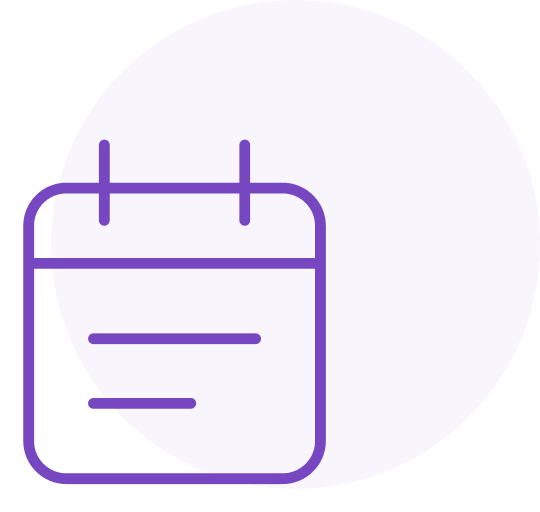This certificate provides the opportunity to train on the basic and necessary competencies and ensure their acquisition to practice eLearning and training efficiently, and to enable obtaining the Professional Certificate in Teaching and Training at the advanced level
Requirements:
How to obtain the certificate:
- Create an account on the Professional Certificates Website.
- Upload the required updated certificates and documents.
- Complete the training of the foundation level for the certificate from one of the recommended training bodies on the National eLearning Center website.
- Practice online teaching or training equivalent to 30 credit hours with a government, private or non-profit sector.
- Upload a proof of practicing teaching or training, an equivalent of 30 hours on the Professional Certificates website.
- Pay the certificate issuance fees.
Target Audience
- K-12 teachers
- Trainers in training institutions
- University faculty members
Fees
500 SR
Certificate validity
1 year starting from the date of issuance
Competencies:
The training is carried out according to specific competencies acquired by the applicant after training and qualifying him from one of the training bodies accredited by the National eLearning Center.
6
Domains
17
Competencies
66
Indicators
1.1 Digital Tools and Apps
1.1.a: Awareness of the strengths and limitations of different types of digital tools and apps and familiarity with each type.
1.1.b: Knowledge of how to use digital tools and apps for teaching/training and learning online and awareness of the benefits and challenges.
1.1.c: Skill in using the program's learning platform.
1.1.d: Awareness of the importance and value of finding, evaluating, and selecting the right technology tools and applications that help in achieving learning objectives.
1.2 Digital Citizenship
1.2.a: Awareness of the need to offer learning experiences that model and promote responsible digital behavior.
1.2.b: Awareness of the need for appropriate management of learners' personal data and privacy.
1 .2.c: Awareness of the need to apply legal intellectual property use of instructional materials.
1.2.d: Awareness of digital literacy, media fluency, and the importance of providing opportunities for learners to apply these attributes to become responsible digital citizens.
1.3 Digital Resources
1.3.a: Skill in finding, evaluating, and curating types and characteristics of quality online content resources relevant to learner needs.
1.3.b: Knowledge of using interactive and immersive learning environments to improve learner outcomes
1.3.c: Awareness that learners creating resources can be a powerful learning tool.
1.4 Digital Troubleshooting
1.4.a: Skill in demonstrating basic troubleshooting skills and resolving basic issues for themselves and their learners.
1.4.b: Awareness of the need to set backup plans for using other alternative technologies to meet the same learning objectives.
2.1 Data and Analytics
2.1.a: Awareness of the need to identify and evaluate multiple data types to support learners and personalize instruction.
2.1.b: Awareness of the need to use learner performance data to evaluate the effectiveness of the instruction, technologies, materials, and assessments.
2.2 Planning
2.2.a: Awareness of the need to apply all applicable policies, whether national or specific, to their eLearning program.
2.2.b: Awareness of the need to meet the applicable accessibility laws and mandates for online teaching/training to ensure inclusion of all learners, including those with physical and cognitive disabilities
2.2.c: Awareness of the need to maintain accurate information and communication records pertaining to parents, learners, and other stakeholders per the eLearning program's policies.
2.2.d: Knowledge of the content, structure, and organization of the course before it begins.
3.1 Online Learning Design
3.1.a: Awareness of the need for setting clear lesson objectives and communicating these to learners.
3.1.b: Awareness of the need for demonstrating age-group appropriate learning strategies that are sufficiently varied to ensure all learners can achieve their learning outcomes.
3.1.c: Awareness of the need for an adequate range of teaching/training strategies to ensure that all learners achieve the desired learning outcomes.
3.1.d: Awareness of the need to set differentiated tasks and activities for a class or course.
3.1.e: Awareness of the need to use various digital tools and resources to support learners’ higher order thinking and problem-solving skills.
3.1.f: Awareness of the need to define clear strategies for providing learner support.
3.2 Synchronous and Asynchronous Teaching/Training and Learning
3. 2.a: Awareness of the need to demonstrate understanding of and communicating the different learning objectives and outcomes, and their relative effectiveness for synchronous and asynchronous teaching/training and learning.
3.2.b: Awareness of the need to educate learners about the characteristics and effectiveness of both synchronous and asynchronous learning, including their advantages and limitations.
3.2.c: Awareness of the need for maintaining learner attention in synchronous environments and facilitating meaningful collaboration among all participants—learners and the teacher/trainer— in the exploration of the
learning material.
3.2.d: Awareness of the need to communicate the timing of virtual tutoring and availability for just-in-time support.
3.3 Engagement and Motivation
3.3.a: Awareness of the need to devise plans to keep learners on task.
3.3.b: Awareness of the need to motivate learners to achieve the desired objectives.
3.3.c: Awareness of the need to build authentic learning activities.
3.3.d: Awareness of using designed simulation scenarios of real-world and hands-on learning experiences that allow their learners to practice their employability, engage in workplace scenarios, and gro
4.1 Assignments
4.1.a: Awareness of the need to provide varied and personalized assignments to ensure that educational objectives are achieved.
4.1.b: Skill in demonstrating understanding of and supporting multimodal assignments where applicable
4.1.c: Skill in ensuring that learners are clear about assignment expectations.
4.1.d: Awareness of the need to design group assignments that support easy identification of learner contributions.
4.2 Examinations
4.2.a: Awareness of the need for secure, robust, and meaningful online examinations and assessments.
4 .2.b: Awareness of the need for strategies to ensure academic integrity.
4.2.c: Skill in delivering peer and self-assessments.
4.2.d: Awareness of making sure that assessment methods and tasks are related to the learning outcomes.
4.2.e: Awareness of the need to select appropriate assessment methods that best suit the purpose, given the skills, abilities, and outcomes the instructor is evaluating, including the business demands of the workplace and industries.
4.2.f: Awareness of the need to design assignments per industry and academic guidelines, real-world experience, and professional learning objectives.
4.3 Learning Outcomes
4.3.a: Skill in providing assignments that can demonstrate a clear mastery of the content and indicate progression.
4 .3.b: Awareness of the need to ensure that learning objectives are clearly outlined and are understood by learners.
4.3.c: Awareness of the need to provide timely feedback that both supports and furthers learning.
5.1 Learners
5.1.a: Awareness of the need to build positive and collaborative relationships online with learners to ensure learner well-being and offer virtual academic support.
5.1.b: Skill in developing communication strategies to facilitate discussion and to promote learning.
5.1.c: Awareness of the need to provide timely and individualized feedback to learners using appropriate communication tools.
5.1.d: Awareness of the need to encourage and create communities for learner collaboration and peer-to-peer teaching/training and learning.
5.1.e Awareness of the need to communicate with parents to engage their support, provide feedback on learner achievement, and deal with any issues.
5.1.f: Awareness of the need to model and instill the importance of learning by communicating the relationship between general academic content presented in CORE classes with the applied technical knowledge taught in vocational classes.
5.2 Teachers/Trainers
5.2.a: Awareness of the need to build positive and collaborative relationships with colleagues using various digital applications.
5.2.b: Developing confidence in sharing online teaching/training plans and resources with colleagues.
5.2.c: Skill in taking advice on how to develop online teaching/training plans and resources with colleagues.
5.2.d: Skill in observing processes for collaborating on team teaching/training through digital tools where appropriate.
5.2.e: Awareness of the need to communicate regularly with external examiners to supply requested information and feedback.
6.1 Reflection
6.1.a: Skill in identifying personal and professional opportunities for growth.
6.1.b: Skill in gathering feedback from learners, parents, and colleagues to continuously improve online teaching/training practices.
6.1.c: Skill in collaborating with family, education, industry, and community partners to self-assess, improve, and create challenging real-world opportunities that help learners plan and achieve their career goals.
6.2 Time Management
6.2.a: Skill in demonstrating effective time management strategies.
6.3 Lifelong Learning
6.3.a: Skill in developing, maintaining, and leveraging online professional networks across various people and groups, internal and external of the organization.
6.3.b: Skill in continually expanding their subject knowledge and keeping abreast of new developments in online learning.
6.3.c: Skill in promoting continuous learning among other teachers and trainers, both internal and external of their own priorities.
6.3.d: Skill in actively engaging with advisory boards, educational and industry colleagues, and college and business partners to develop and maintain networks and stay current with knowledge.
6.3.e: Skill in developing and maintaining a research profile focusing on online learning by participating and presenting at conferences and conducting scholarly research on behalf of the institution.



